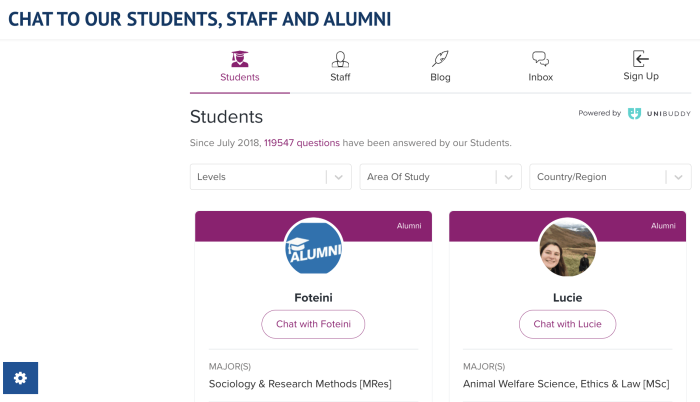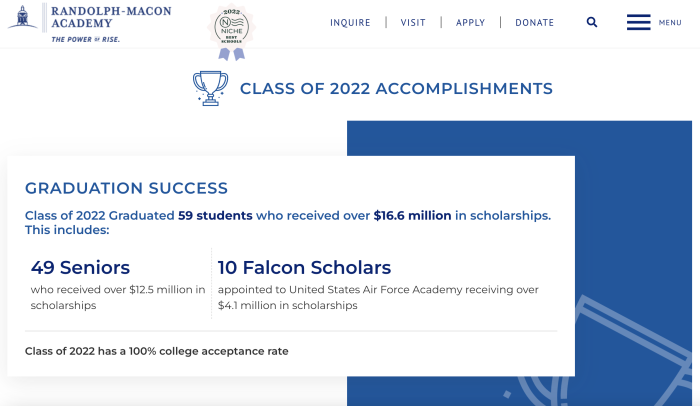Your student recruitment strategy is at the heart of your school’s success. It not only determines the number of students that take the leap to enroll in your institution each year, but it’s also a way to boost your school’s image across digital platforms.
But it’s not easy keeping up with the needs and interests of students today. The education landscape has undergone significant changes in the wake of the COVID-19 pandemic, forcing schools to rethink the way they market themselves to prospective students. Now, the competition is strong for schools looking to make their comeback in the post-pandemic era.
As traditional recruitment methods continue to evolve and new digital platforms gain ground, schools must get creative with their recruitment strategies to catch the attention of prospects. While this places pressure on schools to rise to the challenge, it also opens up opportunities to develop their online presence and extend their reach to local and international prospects. If you’re looking to stand out in this new space, here are some student recruitment strategies to boost your game.

1. Find Your School’s Unique Selling Points
With so many schools focusing on expanding their digital presence, half the battle is distinguishing your institution from the other ones out there. If you find you’re already implementing digital marketing best practices, it’s time to think about personalizing your recruitment strategy and the types of recruitment messages you need to reach the audiences you want.
Take some time to think about your school’s unique selling points and build a brand image around them. Are you a career college with an extensive employment network? Perhaps you’re a renowned research institution or a language school with flexible programs. In each case, make these key selling points the pillars of your school’s identity and refer back to them in your recruitment messaging.
For example, AOLCC has developed a strong identity as Canada’s largest career college network and has woven that identity into its college recruitment strategies –- specifically, into its content marketing. The school understands its target audience as Canadian learners and has found a way to distinguish itself in the eyes of that audience.


Source: AOLCC
Whoever your school is aiming to reach with its unique selling points, prioritize authenticity in your content. Remember, prospective students are often put off by cliched slogans or catchphrases. Developing a unique voice for your school will form the foundation of all its content and help you create a recruitment strategy that is personalized to your school and its target audience.
Meet Prospects on Social Media Platforms
Improving and personalizing your student recruitment strategy is also about staying up to date with the latest trends in user behaviour. While you want to distinguish the voice of your school, you also want to make sure you’re relating to prospective students. And the biggest ongoing trend? Social media.
84% of US adults aged from 18 to 29 are active social media users, while the average daily time spent on social media is nearly 2.5 hours. In other words, social media platforms such as Twitter, Instagram, and TikTok are where you’ll find most Gen Z and millennial audiences, and college recruitment strategies today need to account for that fact.
Social media platforms are a chance to get creative with your student recruitment strategy and bring personality to your school. You want to go beyond the facts and figures and focus on capturing user attention with fun, engaging content.
Example: The University of Melbourne posted an Instagram video to advertise one of its campus events. The post helps to bring the school and its offerings to life, giving prospects a real glimpse of what awaits them on campus.

Source: Instagram
Social media is also a chance for your school to jump on the bandwagon of popular movements and boost its visibility with trending hashtags. Make a note of some upcoming holidays or events and consider ways to put your own personal spin on them.
For example, The University of Leeds created a TikTok in celebration of International Women’s Day that draws attention to its famous female alumni.

Source: TikTok
Getting involved in social or cultural movements as well as current events is a great way for your school to exercise its voice while drawing attention to relevant opportunities that it offers.
Sell Your School Community as a Student Recruitment Strategy
The best way to personalize a student recruitment strategy is to bring forward the experiences of real people. Your students, alumni, and faculty are all unique to your institution; giving them a voice will help to personalize your student recruitment strategy.
Allowing current students to market to your prospects is an even better way to add authenticity to your marketing efforts. Student ambassadors are an increasingly popular way for schools to build their brand reputation on social media. These are current students who can help to promote your school on social media through content that is designed to show the real student experience.
Example: Cambridge University started a TikTok series “Why My College.” In each post, a student from one of its colleges explains why they chose the college they did and highlights their experience so far.

Source: TikTok
This is a great way for prospects to get valuable, first-hand advice that will inform their decisions throughout the recruitment process. Remember, prospects won’t relate to your school as a business; they will relate to the experience and opportunities it offers. So do away with the sales lines and focus on bringing your school to life.
2. Open a Dialogue With Prospective Students
Applying to a new school can be a lengthy process and prospective students will undoubtedly have questions or comments along the way. By encouraging communication between prospects and your school, you can build a rapport that will bring them one step closer to recruitment.
Prospects notice schools that go the extra mile and make it easy for them to engage with, ask questions, and learn more about the student experience. To meet this demand, many schools are turning to live chat features to connect prospects with an admissions offer. A chatbot on your school’s website facilitates this process and allows potential applicants to get direct, automated responses to their questions at all hours.
An even better idea? Get current students and alumni on board to open a more relatable channel of communication. This way, prospects can learn from the experiences of those who have already been in their shoes. Much like student ambassadors, this method helps to build trust in the recruitment process by connecting prospects with members of the student community.
Example: The University of Glasgow’s website features a page where users can chat with students, staff, and alumni. Prospects can use filters to connect with members of the school based on their areas of study and country.

Source: University of Glasgow
Live Q&A sessions are other opportunities to provide more in-depth and personalized responses to student questions. Your school can use these sessions to address common areas of interest among prospects, such as financial aid, scholarships, program offerings, and study abroad opportunities. Here, take advantage of features like Instagram live to extend this recruitment strategy across different platforms.
Example: The University of Oxford held an Instagram Q&A with one of its PhD students, where prospects can ask questions about life at Oxford.

Source: Instagram
However you choose to engage prospects, find a way to personalize the discussion and bring the conversations to them.
3. Refresh Your School’s Website With Relevant Content
To keep your student recruitment strategy relevant to target markets today, you should make sure to update your school’s website regularly to reflect current offerings. Interested applicants will come to your website for key information on the application process, so make sure you’re providing valuable resources that put their minds at ease.
Relevant and up-to-date content not only helps to ensure that prospects are getting the right information but also helps to maintain your school’s reputation as a key player in the sector. Visitors to your website can rest assured that your school has an active presence and continues to achieve success.
Example: Randolph-Macon Academy updates its website each year to reflect the accomplishments of its most recent graduating class. This demonstrates its continued success in this area and supports its reputation as a college preparatory school.

Source: Randolph-Macon Academy
Historical blog optimization is another tactic you can use to refresh the content on your website.
Blogs are an important part of your student recruitment strategy; they help to tell the story of your school and provide more in-depth information on a particular subject. But it’s important to ensure that all content remains relevant to prospects today. With historical optimization, you can take existing blog posts and optimize them to meet the needs of today’s prospects. That includes updating the keywords to reflect recent search trends and verifying that all information is in line with what your school offers today.
4. Prioritize Events in Your Student Recruitment Strategy
It’s no secret that events are among the most powerful university student recruitment strategies out there. In fact, 38% of organizations expanded their event marketing budgets this year as compared to 28% in 2020. In-person and virtual events are the closest that prospects come to connecting with your school—and often one of the final stages in the recruitment process. These events have the potential to make or break a prospect’s decision to attend your school, so your recruitment strategy should reflect that.
When you put time and effort into promoting these events across your digital channels, you can reach a wider pool of potential applicants for recruitment. The tweet below from Buckinghamshire New University is an example of how you can generate excitement for your school’s open day. Make sure to clearly state the date and time, and direct users to a form where they can register for the event.

Source: Twitter
If you’re looking to improve your international student recruitment strategy, virtual events are a good idea to engage applicants from around the world. In fact, many local applicants are appreciating the ease and convenience of virtual events. In that case, try to go beyond a virtual campus tour and offer a more comprehensive experience online.
For example, the University of Waterloo held a virtual open house with an itinerary of presentations covering everything from programs, co-op, student life, financing, and housing.

Source: University of Waterloo
Interested applicants can get the answers they’re looking for while forming a real-life connection with your students, professors, and staff.
5. Assess Your Student Recruitment Strategy With Analytics
Even after implementing the above tips, be ready to review and improve your recruitment strategy on a regular basis. Measuring success should be an ongoing practice in your student recruitment strategy. Data analytics can help you to understand exactly how each marketing tactic is advancing prospects through the recruitment process.
Start by establishing your goals and reviewing your past performances. For example, if you’re trying to attract more international students, examine how effective your efforts are in that area. Take advantage of data from previous admissions to boost your recruitment strategy. Consider where the majority of your current students come from and which marketing strategies generated the most engagement from them. A good digital marketing audit will also help you identify underutilized areas so you can develop a recruitment strategy that makes full use of its channels.
As the higher education landscape continues to evolve, schools need to embrace new digital tactics to catch the attention of applicants and boost their enrollment numbers. By understanding the full scope of opportunities open to you, your school can develop its online presence and extend the reach of its recruitment strategy.







